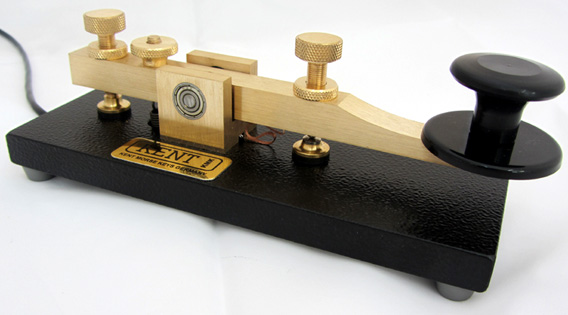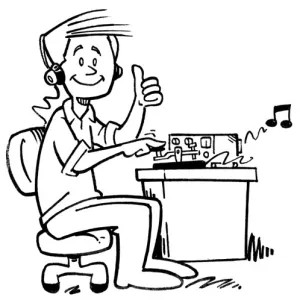Morse Code (CW)
Sometimes referred to as the original digital mode!

CW (Carrier Wave transmission) was the first mode of radio communication, which relied on a transmitter being switched on and off to produce the tone within the receiver. When the transmitter was on there was a tone, and when it wasn’t – there wasn’t!! For many many years Morse code was the dominant form of communication and until reletively recently it was a requirement to getting onto the HF bands for radio amateurs.
These days there is not a requirement to learn Morse code, but it seems that it’s popularity has increased since that requirement was removed. If you listen around the bands you can often hear CW when other SSB signals are absent. There are many activity events that are held with CW over the course of the year. It is a very fulfilling part of the hobby and the fact that you can decode it in your head is a thrilling thing to attain.
One big advantage with CW is that it is extremely narrow in bandwidth, which means you can focus down with filters to the point where you can drastically reduce the QRM level on the band and pick out the messages when audio signals would be lost in the noise. This makes it very good for QRP (low power) transmissions and so is a favourite with SOTA operators who climb mountains to operate with light-weight gear.
Learning CW

The early stages of learning CW takes a lot of determination to get to the point where you are finally on the air and starting to enjoy the benefits of learning and using Morse code. The more time you can spend at it the better but it would be better to do 10 or 15 minutes every day rather than a couple of hours every other week! So regular sessions multiple times a week is the best way to go.
These days there are a huge number of aids that will help you get going either online, on your computer or with apps on your phone, rather different that in days gone by when if you were lucky you had a set of gramaphone records to listen to!
Amongst those resources is Learn CW Online (LCWO.net). This is an excellent website that once you have created a login walks you through learning Morse code.
Once you have started to pick up the code the a PC program like QRQ -( CW trainer) that works in Linux, Unix, OS X and Windows is very useful to pick up speed of receiving. There are phone apps like ‘Morse Player‘ that will play text to you while you are working, walking or driving which again provide very good practice.
If you are interested in learning the code, then there are members of the club that would be more than willing to help you and keep you motivated and even provide tuition in person or online. In the first instance contact Peter G0OIK at peter@g0oik.co.uk
Reverse Beacon Network (RBN)
The reverse beacon network is a very useful online tool that will give you a good idea of how widely your CW signal is being heard. It is a network of stations listening to the bands and reporting what stations they hear, when and how well. This information is updated every minute, so if you call CQ ‘yourcall’, you can then watch the website and see where and how well you are being heard. The RBN website can be found HERE!
